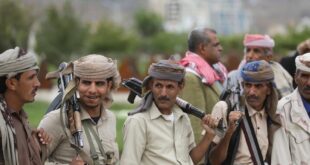By STRATFOR
Summary
Egypt’s internal security forces are reportedly redeploying across the country Jan. 30 after abandoning the streets the previous day in a demonstration, showing what chaos would ensue should they be undermined by the military. As the protests show early signs of dwindling, Egyptian President Hosni Mubarak and Interior Minister Habib el-Adly, who have negotiated a stay in power so far, are likely betting that the protesters, who thus far have been unable to coalesce into a unified group, will clear the streets under pressure. However, serious potential for clashes remain, especially considering hostilities between the army and the police and between the police and protesters. The coming hours will thus tell whether Mubarak’s bet on the opposition was a wise one.
Analysis
Egyptian Interior Minister Habib el-Adly reportedly ordered Egyptian police patrols to redeploy across Egypt during a Jan. 30 meeting with the commanders of the Central Security Forces (CSF) in Nasr city east of Cairo.
The decision to redeploy the internal security forces follows a major confrontation that has played out behind the scenes between the Interior Ministry and the military. The animosity between Egypt’s police and soldiers was amplified Jan. 28 when demonstrators overwhelmed the CSF and plainclothes police and the army stepped in to attempt to restore order.
Fearing that he and his forces were being sidelined, el-Adly was rumored to have ordered the police forces to stay home and leave it to the army to deal with the crisis. Meanwhile, multiple STRATFOR sources reported that many of the plainclothes policemen were involved in a number of the jailbreaks, robberies of major banks, and the spread of attacks and break-ins into high-class neighborhoods that occurred Jan. 29. In addition to allowing the police to blow off steam, the implicit message that the Interior Ministry was sending to the army through these actions was that the cost of undermining the internal security forces was a complete breakdown of law and order in the country that would in turn break the regime.
That message was apparently heard, and, according to STRATFOR sources, the Egyptian military and internal security forces have coordinated a crackdown for the hours ahead in an effort to clear the streets of the demonstrators. The interior minister has meanwhile negotiated his stay for the time being, in spite of widespread expectations that he, seen by many Egyptians as the source of police brutality in the country, would be one of the first ministers that would have to be sacked in order to quell the demonstrations. Instead, both Egyptian President Hosni Mubarak and el-Adly, the two main targets of ire for the demonstrators, seem to be betting that they can ride this crisis out and remain in power. So far, the military seems to be acquiescing to these decisions.
The real test for the opposition has thus arrived. In spite of a minor reshuffling of the Cabinet and the military’s reasserting its authority behind the scenes, Mubarak and el-Adly remain in power. The opposition is unified in its hatred of these individuals, yet divided on most everything else. The Muslim Brotherhood’s Islamist platform, for example, is very different from opposition figure Mohamed ElBaradei’s secularist campaign, which explains why no one has been able to assume leadership of the demonstrations. In evaluating the situation on the streets, the regime appears willing to take a gamble that the opposition will not cohere into a meaningful threat and that an iron fist will succeed in putting down this uprising.
Within the next few hours, police and military officials are expected to redeploy in large numbers across major cities, with the CSF taking the first line of defense. Tensions are still running high between the internal security forces and the military, which could lead to serious clashes between the army and police on the streets. The size and scope of the protests appear to be dwindling into the low thousands, though there is still potential for the demonstrations to swell again after protesters rest themselves and wake up to the same government they have been trying to remove. Moreover, as the events of Jan. 28 and Jan. 29 illustrated, protesters are far more likely to clash with the CSF than with the military.
A deadly clash in front of the Interior Ministry on Jan. 29 demonstrated the varying tensions between the protesters on one side and the military versus the police on the other. According to a STRATFOR source, el-Adly was attempting to escape the Interior Ministry under heavy protective detail Jan. 29 when he came under attack. The CSF reportedly shot dead three protesters attempting to storm the building. Eyewitness reports later came out claiming that the army had to step in and set up a barrier between the protesters and the CSF to contain the crisis.
The demonstrators are still largely carrying with them the perception that the military is their gateway to a post-Mubarak Egypt and the CSF is representative of the regime they are trying to topple. It remains to be seen how much longer that perception of the military holds. A curfew in Cairo, Alexandria and Suez has been extended from 3 p.m. to 8 a.m. local time. In the hours ahead, it will become clearer whether the redeployment of the internal security forces will contribute to improving security and the government’s control or whether their presence will simply further stoke the flames.
 Eurasia Press & News
Eurasia Press & News
